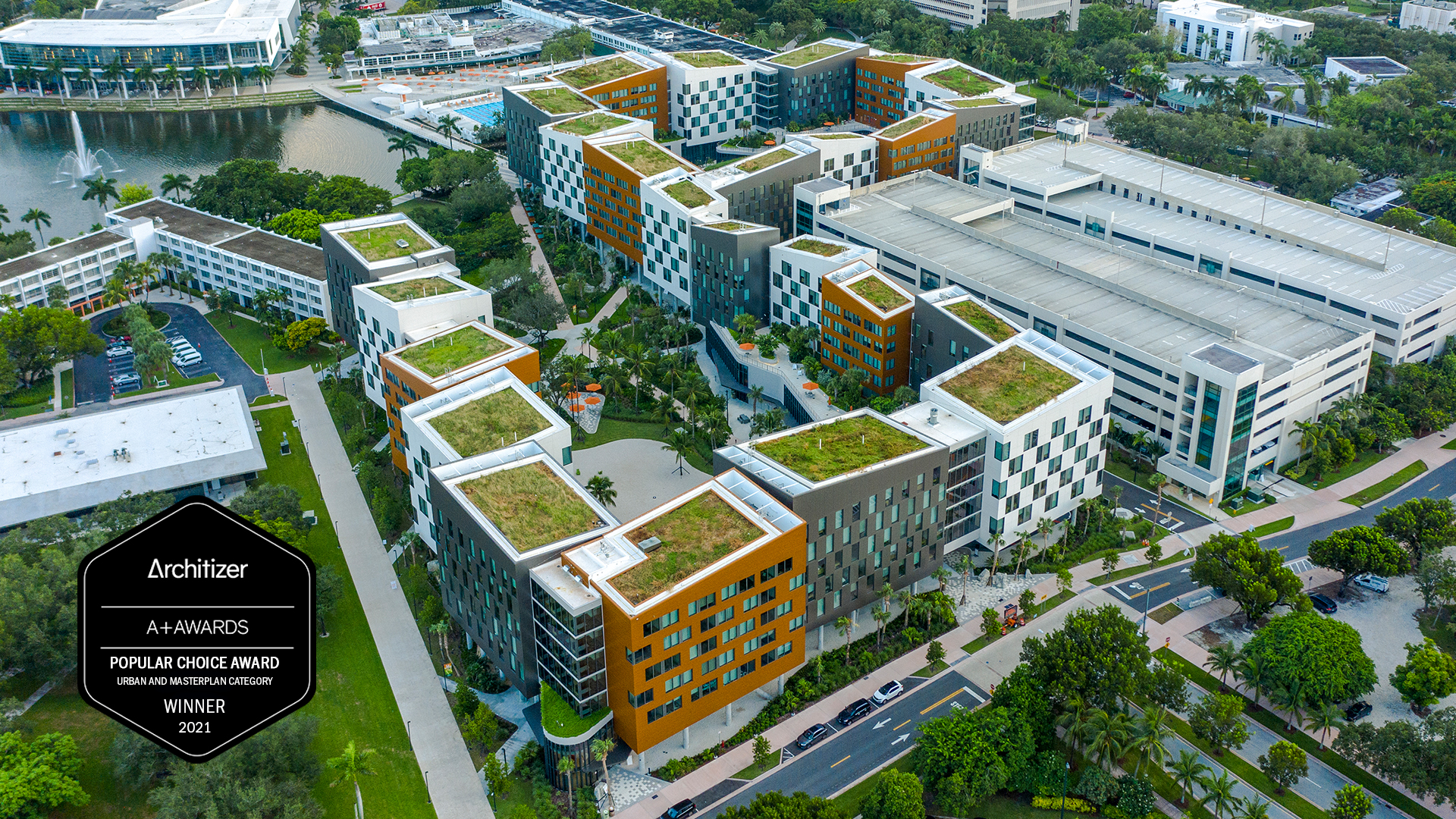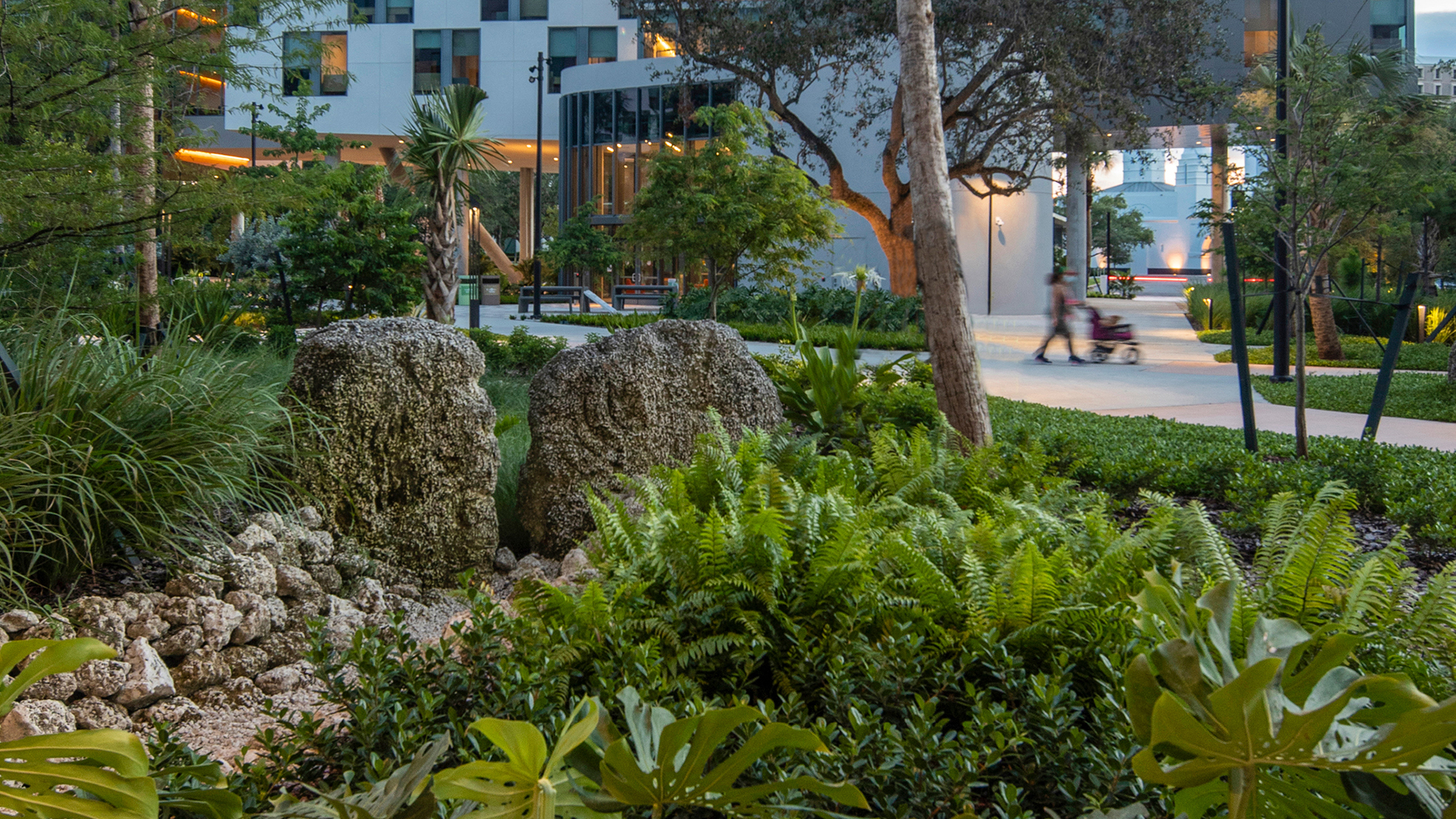University of Miami – Lakeside Village
A new 12.4-acre (540,000 sf), mixed-use student housing complex comprised of 26 interconnected buildings will be home to 1,115 students. The site fronts Lake Osceola and is filled will a lush, native tropical garden. The design objectives included delineating natural paths of travel, affording covered movement systems, creating plazas and courtyards, reinstating a tropical landscape and designing a building that feels synchronous with the natural environment using scale, repetition, structured irregularity, and natural materials. The project includes 26 extensive green roofs encompassing 60,000sf that act as heat and light sponges as well as systems that capture rain water that feed into the rain gardens on site.
A vibrant and lively space at the epicenter for academic and cultural interaction on campus, Lakeside Village transforms into more than just a place to sleep. Unlike a traditional housing facility, the village includes active indoor and outdoor spaces to facilitate engagement among the entire campus community.
What used to be a waterfront parking lot was replaced with a large common outdoor garden and green space. This idea of reclaiming the ground floor for students, common use, and outdoor tropical space suggested the importance of raising the living units and the building above the ground plane. The proposed design eliminates vehicular traffic in exchange for pedestrian centric major and secondary walkways connecting key nodes and buildings through the landscape.
An overarching effort was made to blend environments. Most of the interiors seamlessly transitioning from indoor to outdoor spaces through tropical landscapes that integrate South Florida’s natural environment and contribute to the University’s own sense of community. While major programming, such as exhibition, recreation, retail, welcome and study centers maintain an amoeba like footprint at the ground level, the housing units are connected by landscaped walkways and elevated gardens.
Established student-created pathways were worked into the landscape and building layouts, implying a very natural pedestrian circulation as it meanders through the breezy, naturally lit communal spaces, much of it sheltered from the weather. Integrated rain gardens provide a habitat for native plants and wildlife as they collect rain water through downspouts coming from the green roofs.
Three on-site nurseries and limestone quarry were a highly developed initiative by ArquitectonicaGEO. Over 100 trees were harvested from the site before construction began and replanted at on-site nurseries surrounding the site that contributed to more than 74,000sf of relocated tree canopy. Existing trees and plant life were evaluated and, when possible, were incorporated into the landscape of Lakeside Village or located elsewhere on campus or in the surrounding local area. The strategy of sourcing from the site was highly effective in terms cost, time, effort, and the desired final outcome of using matured trees.
The limestone boulders were excavated from the site. A plan envisioned from the start while studying the site and understanding the available resources. This became an ingenious way of creating iconic pieces for the site’s character. Some of the limestone boulders will become benches, others will be featured in the rain garden, and some of the stone will have crevices cut into them so that plants can grow in the rock, as so often happens in natural settings.
* AIA Florida/Caribbean Design Awards (2021) Category: Sustainability - Award of Excellence














